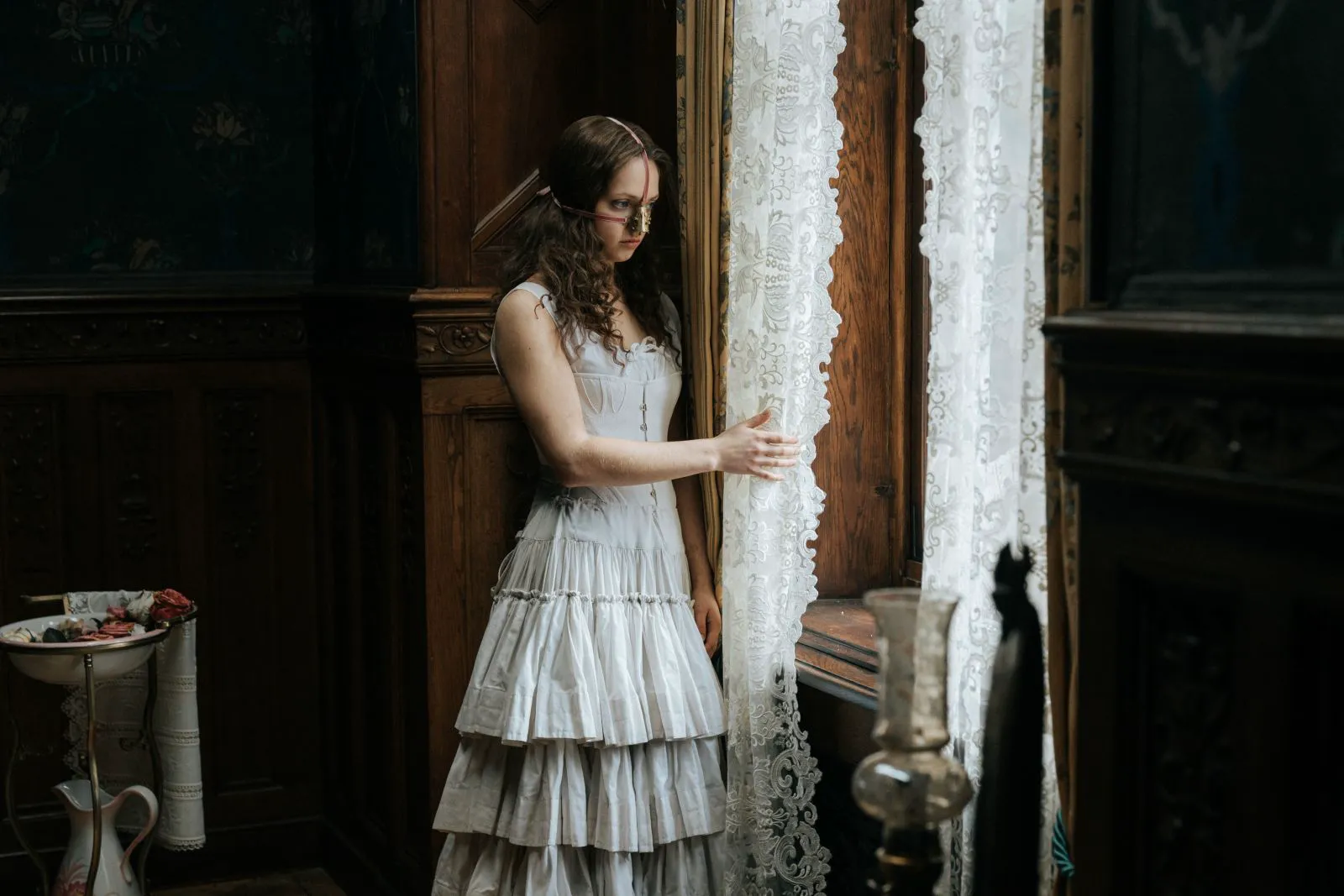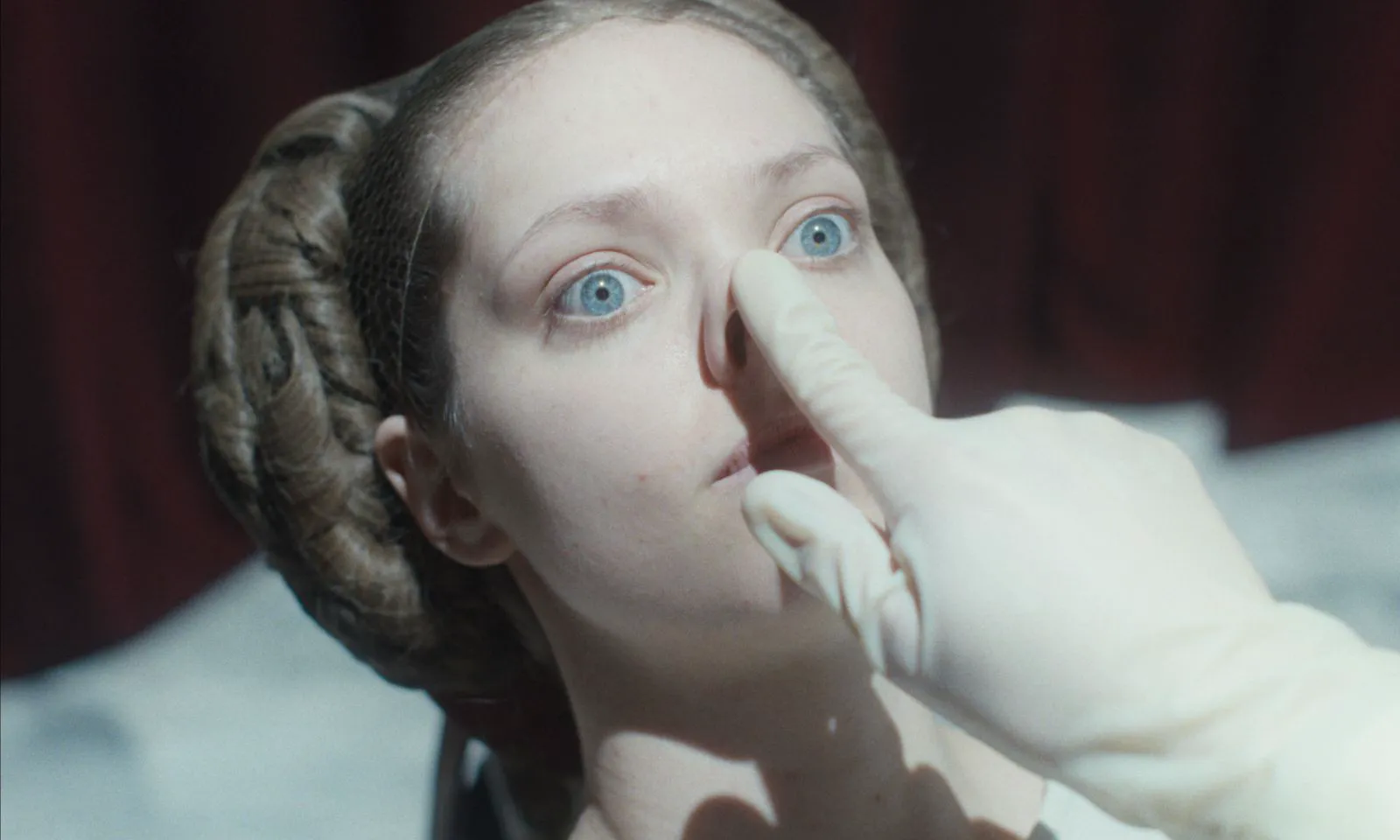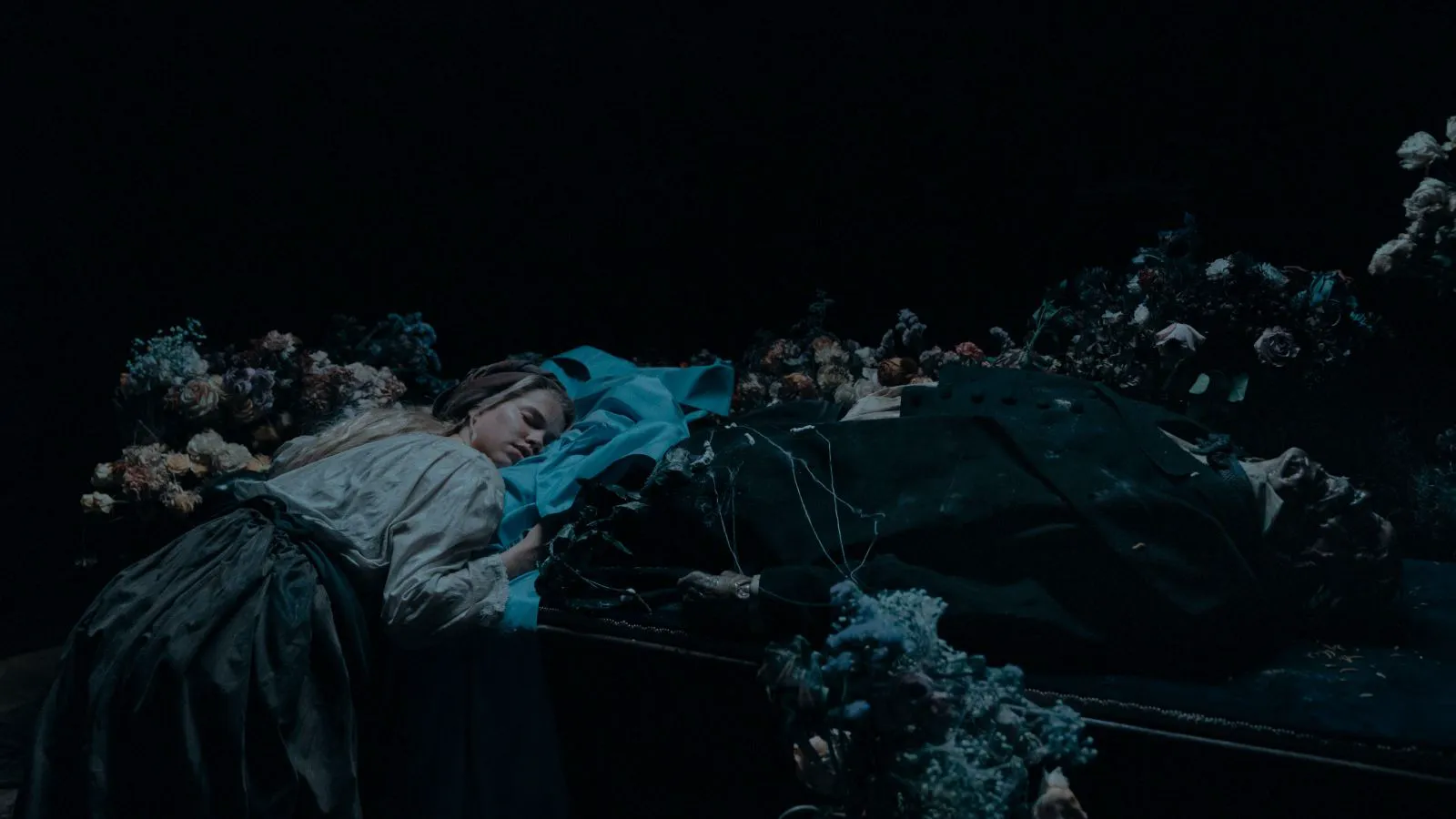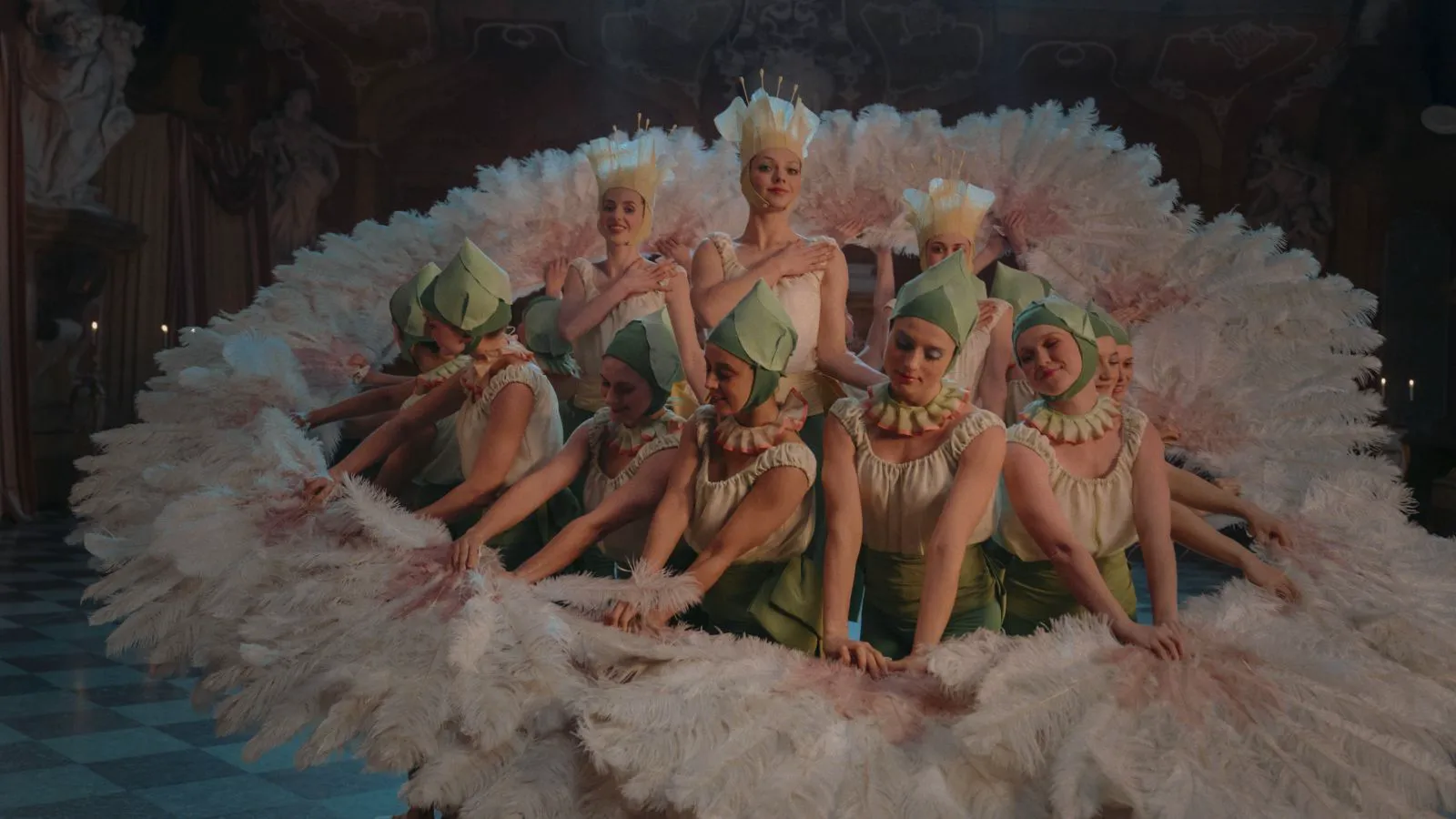A Twisted Take on Cinderella: Unveiling the Dark Humor of “The Ugly Sister”
“The Ugly Sister” reimagines the classic Cinderella tale through a darkly comedic lens, focusing on the often-overlooked perspective of the stepsister. This isn’t your typical fairy tale; it’s a twisted journey filled with body horror, social commentary, and a healthy dose of black humor.
Rebekka (Ane Dahl Torp), a widowed and impoverished mother, arrives in a foreign kingdom with her two daughters, Alma (Ella Fagerli) and Elvira (Lea Miren). They are in search of a seemingly promising future: a wealthy groom, a castle, a dowry, and a fresh start. However, their dreams are shattered when the new husband unexpectedly dies during their first family dinner. Rebekka inherits nothing but problems: a beautiful stepdaughter, Agnes (Tea Sofie Loch Næss), with questionable affections, and a mountain of debt instead of the promised riches. The only solution? To marry off one of her daughters to a suitable match.
Alma, the youngest, is too young for the marriage market. Agnes is beautiful but considered an outsider and, more importantly, lacks innocence and refuses to conform. That leaves Elvira, a modest and shy girl who dreams of a Prince Charming (Isak Calmroth). In an instant, Elvira becomes her mother’s primary project. The transformation involves not only lessons in etiquette and ballet but also more radical measures: a medieval cosmetic surgery course from Doctor Estetik (Adam Lundgren), a mysterious figure with tools suspiciously resembling a plumber’s kit.

Lea Miren as Elvira in “The Ugly Sister”
A Surreal and Grotesque Vision
Elvira’s dreams of a Prince are filtered through a grainy, pink lens, reminiscent of the hypnotic visions in Kevin Kopacka’s surreal horror film “Dawn Breaks Behind the Eyes” and the glitter-covered characters of Bertrand Mandico’s “After Blue (Dirty Paradise).” The electronic compositions by Jon Erik Koda evoke the legendary journey of Melvil Poupaud and Suzanne Clément to Black Island under Moderat’s “A New Error.” Whether consciously or not, director Emily Blichfeldt draws inspiration from the best, stitching them together with Cronenbergian threads and returning to the Brothers Grimm’s version of “Cinderella,” where the stepsisters end up without fingers or eyes by the story’s end.
Deconstructing Beauty Standards
There’s no doubt that Lea Miren is captivating. Similar to popular American comedies of the 2000s, Blichfeldt deliberately presents an inherently beautiful actress as an “ugly duckling.” This time, however, it’s not about glasses. Miren transforms into the “ugly” sister with an awkward smile, braces, and tightly wound curls resembling earthworms. Yet, even these “special effects” don’t completely strip the actress of her external appeal. Her “unworthiness” is highlighted by the contrast: against the fair-haired and angelic Agnes, who appears on screen with a flock of doves taking flight, Elvira may indeed seem to lack the necessary aristocratic aura.

Lea Miren as Elvira in “The Ugly Sister”
Taking Agnes as the ideal, Elvira’s mother attempts to reshape her daughter, forcing her into artificially imposed standards. “Beauty is pain,” declares a poster placed directly opposite the infamous chair where young women voluntarily (or through cunning persuasion from relatives) offer their bodies to the mercy of incompetent doctors. Cocaine-laced painkillers, three seconds to process, and off we go! A chisel to the nose, a hook to the lower conjunctiva, and in a couple of months, we can even use a knife on the chest. What’s not to love? Elvira anxiously glances at her mother, notices an encouraging smile, and sighs heavily. The advertising poster drowns in bloody tears, and the inexperienced stepsister has no choice but to submit to fate.
The Price of Perfection
Further transformations are inevitable: a 10-meter tapeworm now reigns inside, consuming essential micronutrients along with “extra” calories. In pursuit of mythical beauty, Elvira loses her natural charm: thick chestnut hair, a healthy complexion, and a sparkle in her eyes. And all for what? For a Prince who, in reality, doesn’t deserve any of the contenders for his heart and wallet.

Tea Sofie Loch Næss as Agnes in “The Ugly Sister”
A Triumph of Production Design
Blichfeldt’s inventiveness is admirable, but the work of the team also deserves special mention. Production designer Sabina Hviid (“Speak No Evil”) works wonders on set, transforming a familiar tale into a cocktail of Busby Berkeley musicals and the body horror of Julia Ducournau and Coralie Fargeat. Costume designer Manon Rasmussen (who has worked on almost all of Lars von Trier’s films) seems to gather dusty dresses from Sofia Coppola’s “Marie Antoinette” and deliberately age them. The costumes are simultaneously charming and devoid of vibrant colors, as if they have been lying in a closet as museum exhibits for a long time.

Lea Miren as Elvira in “The Ugly Sister”
A Nuanced Perspective
By shifting the perspective from Cinderella to the stepsister, Blichfeldt removes the fairy-tale extremes inherent in Charles Perrault’s version. The director doesn’t turn Cinderella into an enemy or Elvira into an unfortunate creature facing injustice. On the contrary, each of the heroines, with the possible exception of the exemplary Alma, has her own set of contradictory characteristics (and who among us doesn’t?). The educated beauty Agnes dreams of marrying a stable boy but understands that she needs to find a more advantageous match to survive. She is so powerless that she can’t even bury her beloved father and is forced to watch him decompose for weeks. The naive Elvira listens to her mother in everything, believing that the woman is leading her daughter straight to Prince Charming, who is not only handsome but also rich (and over time, Elvira begins to feel that she won’t settle for anything less). You probably wouldn’t want to deal with either of them, but each deserves sympathy in her own way.
Emily Blichfeldt shakes the romance out of the fairy tale and offers a whirlwind ride down a road filled with rotting waste, severed fingers, and trampled hopes. The journey is not pleasant, but it is still necessary, at least for those who cannot reconcile with their own bodies. How many more charming stepsisters will ruin their lives trying to pay an exorbitant price for an abstract and unstable image of a better version of themselves? Comparisons to “Titane” are inevitable, but today we want to deliberately avoid them: Blichfeldt’s cinema is original and deserves a separate place in the sun.